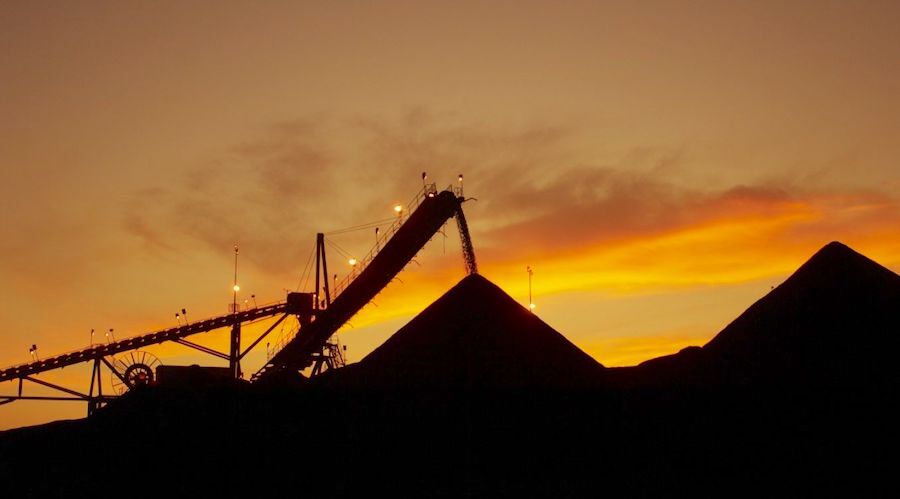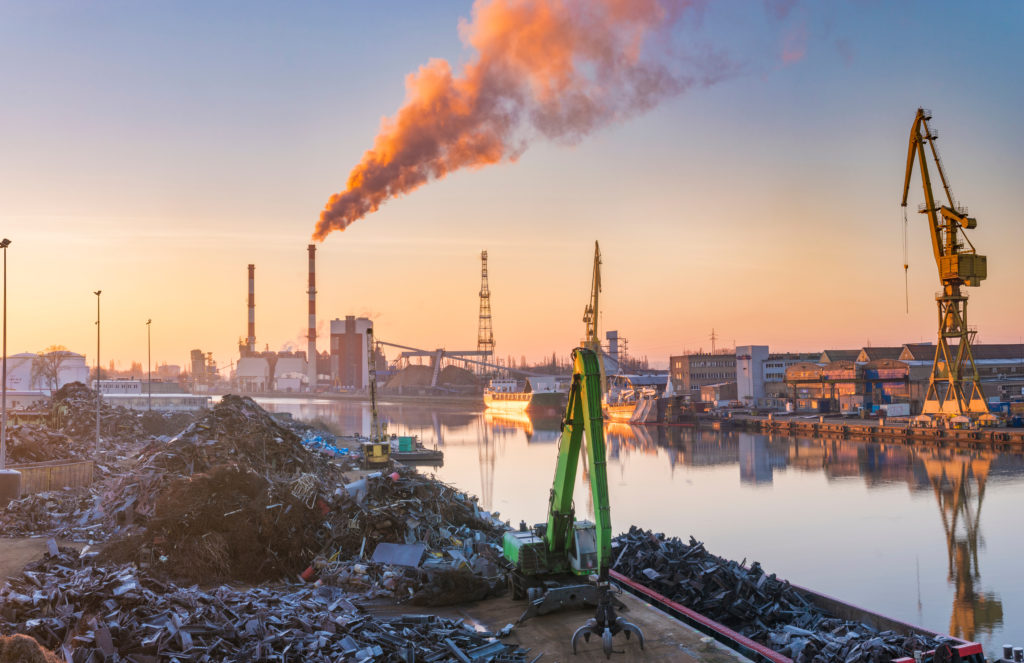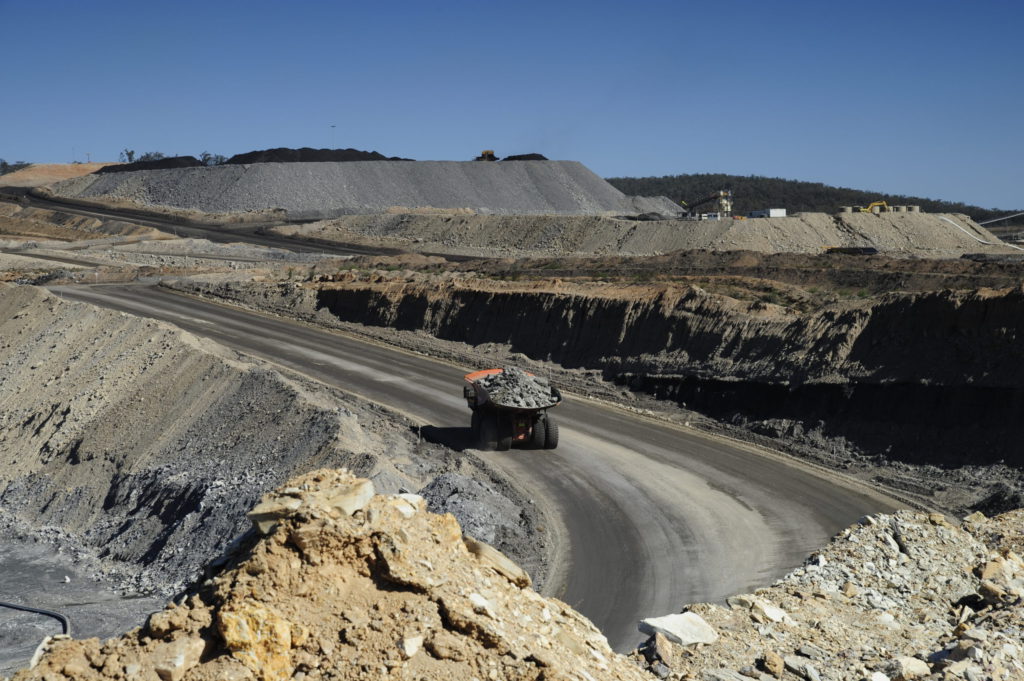More investors push Glencore to keep coal post-Teck deal
Reuters | March 22, 2024 |

Mt Owen coal mine in Australia’s New South Wales. (Image courtesy of Glencore.)
A growing group of Glencore investors are keen for it to keep mining coal instead of spinning out the soon-to-be enlarged unit, with one eye on its financial outlook and another on the environmental benefits of keeping the fuel in-house.

Echoing a demand last week by activist Tribeca Investment Partners, investors said the polluting fossil fuel would be a lucrative option – for a decade or two at least – even as it is phased out in favour of renewable energy.
The Swiss-based miner and trader is set to see its coal unit grow sharply after it completes a $6.9 billion deal to buy the majority of Canadian miner Teck’s one, but said it plans to list the combined assets separately in New York.
Glencore is already a top producer of thermal coal with output of around 110 million tonnes a year, and also has coking coal assets.
By buying Teck’s business, in a deal set to close by the third quarter this year, it will add 20 million tons of annual steelmaking coal capacity and create a powerhouse that analysts say should generate $5-$6 billion a year in free cash flow.
A greater focus on climate risk in recent years has seen a number of pension and investment funds, financiers and insurers cut support for coal companies, leading some including Rio Tinto and Anglo American to sell or spin theirs out.
While doing so can lead to a share price bump, critics say the assets are often shifted into the private markets and run for longer with no investor oversight, potentially leading to a worse climate outcome.
For a long time, Glencore had adopted the same line, and said ditching coal would do little to cut its emissions, only to change its mind after the Teck deal was agreed, with chief executive Gary Nagle saying it would consult shareholders for their views on spinning off once the acquisition is concluded.
Ahead of any vote on the plan, though, three top-15 investors spoken to by Reuters said they would oppose the attempt to spin off its coal assets.
One top-10 shareholder said they ‘strongly disagree’ with the idea and had already told the company. The shareholder declined to be named as they are not authorised to speak publicly.
Andrew Mason, head of active ownership at Abrdn, which holds shares in Glencore, said: “In most circumstances, we do not believe that simply divesting as quickly as possible will achieve the best outcome.”
“Companies need to have credible strategies that support real-world decarbonisation,” he said, adding that a timed phase-out would facilitate a “just transition” to a greener future that minimised the impact on workers and communities.
A responsible wind down of coal is better than a divestment, given the “rapidly diminishing” global carbon budget, the emissions allowed before the world breaches its goal of capping global warming at 1.5 degrees Celsius, said Naomi Hogan at non-profit climate group Australasian Centre for Corporate Responsibility (ACCR).
“Fundamentally, good corporate governance requires Glencore to take responsibility for the emissions from its coal portfolio,” Hogan added.
Glencore’s carbon emissions rose 8.8% in 2023 from the previous year partly due to higher coal production, but were still down 21.8% from a 2019 baseline, according to its annual report.
“This is an extremely concerning step backwards for Glencore,” Hogan said in a note.

According to the Climate Action 100+ investor group, Glencore’s efforts to-date are mixed, as it failed to meet or partially meet their climate expectations on issues including capital expenditure and decarbonisation strategy.
Data from LSEG, however, places it among the best-performing of its peer group on a range of environmental, social and governance-related metrics, ranking it 4th out of 455 companies.
As well as the environmental argument, Tribeca said the coal assets would continue to be profitable as long as they were active and could benefit the rest of the portfolio – something the top-10 investor echoed, citing a likely surge in demand for cheap electricity from data centres in the years ahead.
Ian Woodley, portfolio manager at Old Mutual, agreed: “The likelihood is in 10 to 12 years, we’ll have another big upcycle, maybe once, maybe twice. And you see just how much cash the assets generate.”
After hitting an all time high above $400 a ton in 2022 when countries sought alternatives to Russian gas after the start of the war in Ukraine, thermal coal prices now trade around $130, while coking coal rose to above $300 a ton last year.
“In a private company, that would be paid out as dividends, but Glencore can take that cash and invest it in the rest of their portfolio,” Woodley added.
(By Clara Denina and Simon Jessop; Editing by Veronica Brown and David Evans)
China coal industry group expects output growth to slow in 2024
Reuters | March 20, 2024

Stock image.
China’s coal output is expected to increase 36 million metric tons, or 0.8%, to about 4.7 billion tonnes in 2024, a Chinese coal industry group said on Wednesday, slower than last year’s 2.9% growth.

The projection comes on the back of record output in 2023, when the world’s largest coal consumer mined 4.66 billion tons of the polluting fossil fuel.
The China Coal Transportation and Distribution Association (CCTD) expects domestic coal prices to decline at an accelerated pace, partly due to weakness in its real estate markets, said Feng Huamin, senior analyst at CCTD’s research department.
Feng pointed to government orders to suspend infrastructure projects in some heavily indebted provinces as one of the key reasons for the pressure on prices.
Declines in property investment and sales in China have slowed amid government efforts to arrest a protracted downturn in the sector, but analysts were wary of calling an end to the pain in the fragile housing markets just yet.
Output from non-fossil sources will add to pressure on thermal output this year, with power output expected to grow in line with its 5% economic growth forecast, Feng said.
“A large portion of forecasting institutions believe that hydropower generation will see clear improvement this year,” Feng said, adding that higher solar and wind installations could help address about 70% of the expected growth in power demand.
Drought-like conditions in key generating regions resulted in China headlining an alarming decline in hydroelectricity output in Asia last year, as its output plunged at the steepest pace in decades.
Some miners have paused production for longer after the Lunar New Year break, sources familiar with the matter said. Feng said a few mines are already at risk of hitting their storage limits due to high inventory levels.
Separately, the top coal producing hub of Shanxi is expected to cut output by 40 million tons this year, partly due to a slew of accidents in the recent past, Feng said.
Shanxi saw mine accident-related deaths surge over 50% in 2023, pushing the mining safety regulator to issue a notice last month asking mines to curb overproduction to prevent accidents.
However, power use by industries during the first two months of 2024 grew at a surprisingly high 9.7%, Feng said, a trend which could push stockpiles lower if it continues.
(By Colleen Howe and Sudarshan Varadhan; Editing by Jacqueline Wong and Miral Fahmy)

Stock image.
China’s coal output is expected to increase 36 million metric tons, or 0.8%, to about 4.7 billion tonnes in 2024, a Chinese coal industry group said on Wednesday, slower than last year’s 2.9% growth.

The projection comes on the back of record output in 2023, when the world’s largest coal consumer mined 4.66 billion tons of the polluting fossil fuel.
The China Coal Transportation and Distribution Association (CCTD) expects domestic coal prices to decline at an accelerated pace, partly due to weakness in its real estate markets, said Feng Huamin, senior analyst at CCTD’s research department.
Feng pointed to government orders to suspend infrastructure projects in some heavily indebted provinces as one of the key reasons for the pressure on prices.
Declines in property investment and sales in China have slowed amid government efforts to arrest a protracted downturn in the sector, but analysts were wary of calling an end to the pain in the fragile housing markets just yet.
Output from non-fossil sources will add to pressure on thermal output this year, with power output expected to grow in line with its 5% economic growth forecast, Feng said.
“A large portion of forecasting institutions believe that hydropower generation will see clear improvement this year,” Feng said, adding that higher solar and wind installations could help address about 70% of the expected growth in power demand.
Drought-like conditions in key generating regions resulted in China headlining an alarming decline in hydroelectricity output in Asia last year, as its output plunged at the steepest pace in decades.
Some miners have paused production for longer after the Lunar New Year break, sources familiar with the matter said. Feng said a few mines are already at risk of hitting their storage limits due to high inventory levels.
Separately, the top coal producing hub of Shanxi is expected to cut output by 40 million tons this year, partly due to a slew of accidents in the recent past, Feng said.
Shanxi saw mine accident-related deaths surge over 50% in 2023, pushing the mining safety regulator to issue a notice last month asking mines to curb overproduction to prevent accidents.
However, power use by industries during the first two months of 2024 grew at a surprisingly high 9.7%, Feng said, a trend which could push stockpiles lower if it continues.
(By Colleen Howe and Sudarshan Varadhan; Editing by Jacqueline Wong and Miral Fahmy)
Australian coal miners woo private capital as banks get leery
Bloomberg News | March 20, 2024 |

Credit: Whitehaven Coal
Australian coal producers are increasingly dabbling in high-interest private loans as lenders look to replace reluctant banks that are held back by ESG concerns.

Sydney-based coal miner Whitehaven Coal Ltd.’s deal last month to secure a $1.1 billion loan for buying two mines attracted 17 private credit lenders and only one bank. A consortium led by Golden Energy and Resources Pte Ltd. also is sounding out private credit funds, as well as banks, to secure financing for its $1.65 billion acquisition of a coal mine in Australia, according to people familiar with the matter.
Their talks reflect the growing prominence of private credit, which has ballooned to a $1.7 trillion market worldwide by taking on riskier projects with attractive margins. Private credit firms’ forays into the coal business signify more battles ahead for ESG proponents even while banks back away from environmentally questionable projects.
“There’s different forms of private capital, family office money and other individuals who don’t have the same ESG obligations or pressures as what some of the big funds do,” said Nick Sims, co-head of investment banking, Australia & New Zealand at Goldman Sachs Group Inc. “There’s a role for them and they have been playing that role.”
More broadly, private credit is one of several alternative funding sources that the energy industry has tapped in recent years as ESG-based lending metrics hamper banks. Private equity firms have been more active in the business amid the retrenching. Asset-backed bonds, supported by oil and gas reserves, have also come into play.
Another funding source for coal miners is to sell a minority stake to their customers, such as steel manufacturers, who want to ensure their supply can be sustained, according to Rory Simington, principal analyst for Asia Pacific thermal coal research at analytics firm Wood Mackenzie. JSW Steel’s reported talks to buy a 20% stake in a Whitehaven-owned coal mine may be an example, he said.
Higher borrowing costs
Whitehaven’s reception from private credit firms is in sharp contrast to its struggles last year. The company had to pull a A$1 billion ($653 million) loan refinancing due to banks’ unwillingness to extend the loan, the Sydney Morning Herald reported.
Some of Australia’s major banks — Australia & New Zealand Banking Group Ltd., Commonwealth Bank of Australia, National Australia Bank Ltd. and Westpac Banking Corp. — all have committed to limit or refrain from lending to thermal coal miners.
Whitehaven’s new pool of lenders are mainly international funds, such as Hong Kong-based Asia Research & Capital Management Ltd, Farallon Capital Management LLC and Sona Asset Management Ltd.
Its deal also underscores the fact that alternative lenders would be typically more expensive. Whitehaven is paying 650 basis points over SOFR for the debt.
“Mainstream lenders do not want to finance coal, so they have to go to higher cost hedge funds and family offices,” said Patrick Marshall, head of private credit at Federated Hermes.
Private credit could also come in handy as coal miners transition into new business lines. Whitehaven’s private credit loan refinances a $900 million bridge loan to back the takeover of two mines for metallurgical coal, a key ingredient in steel manufacturing and considered less environmentally threatening than thermal coal.
“If you can badge your project or your company as metallurgical coal rather than thermal coal, it makes a huge difference in terms of who you can talk to or who’s able to finance,” Simington at Wood Mackenzie said.
(By Sharon Klyne and Megawati Wijaya)

No comments:
Post a Comment